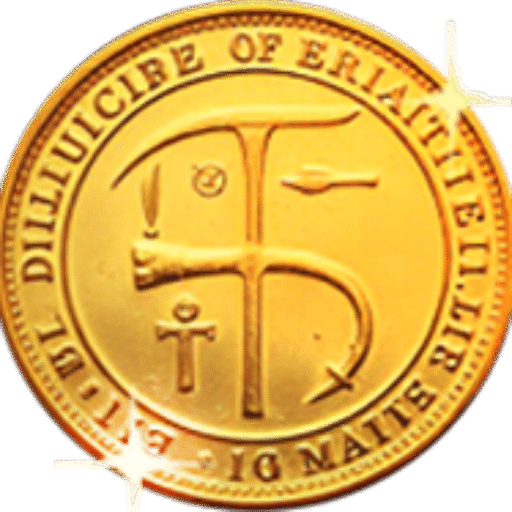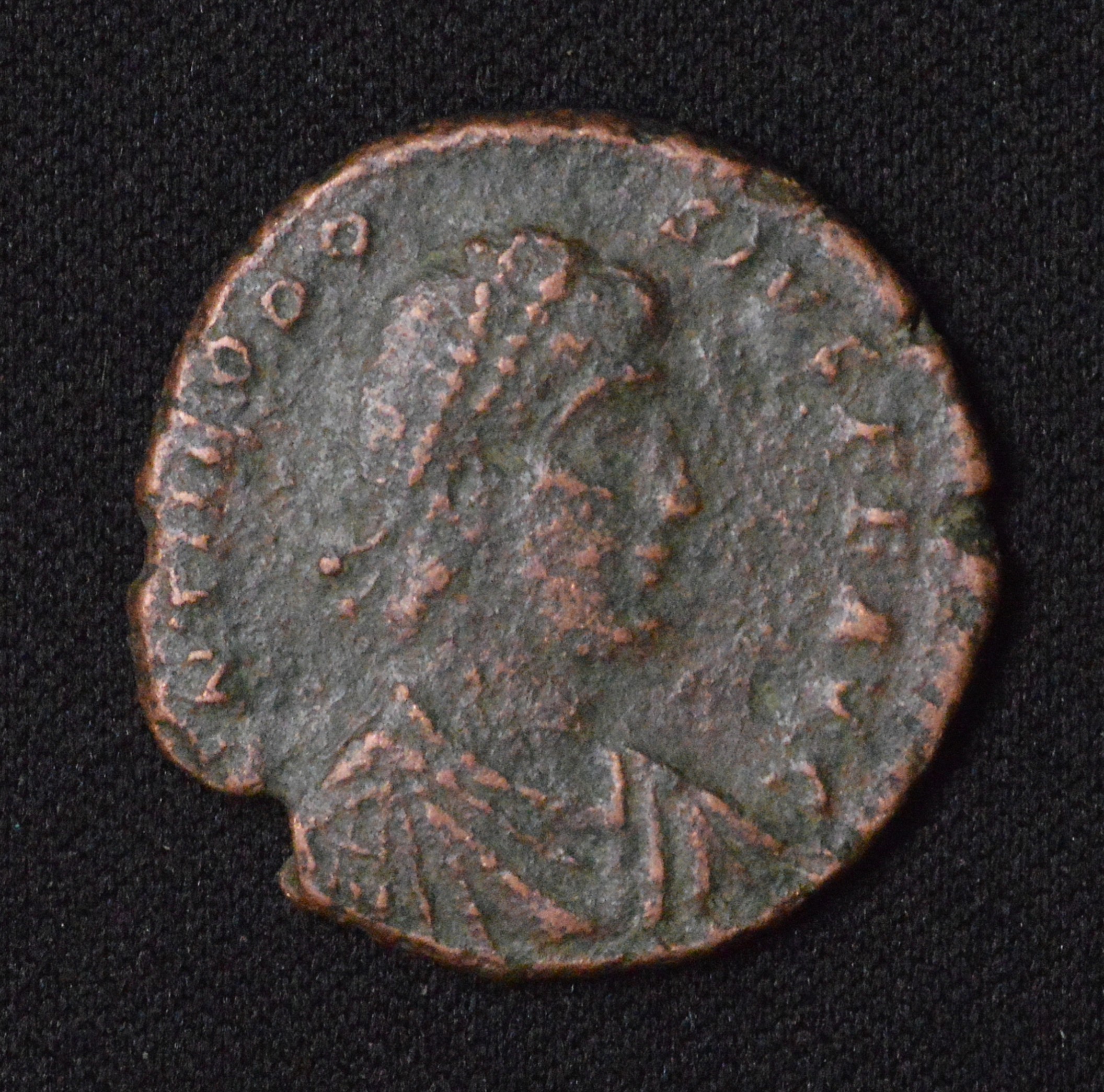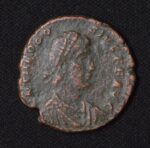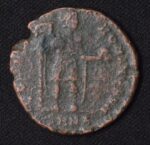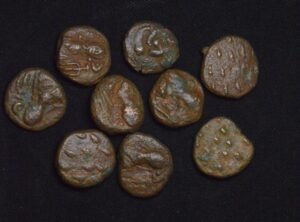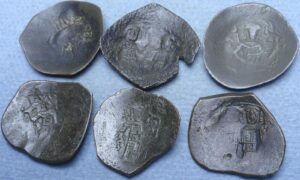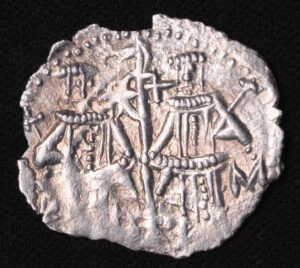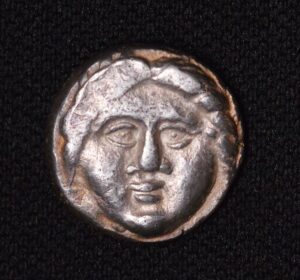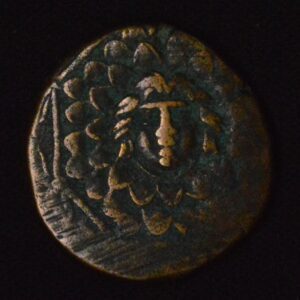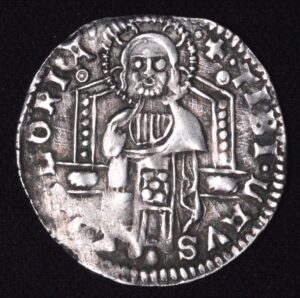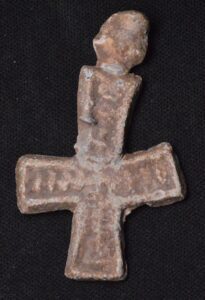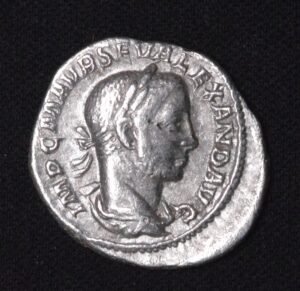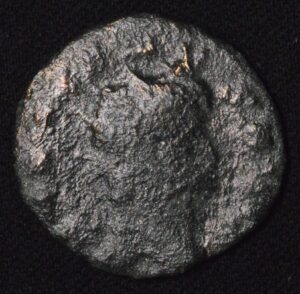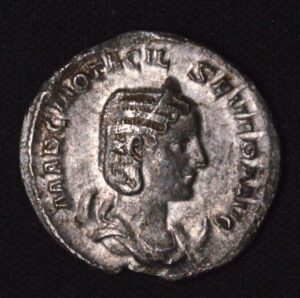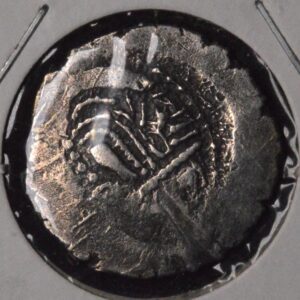Description
An Ancient Roman bronze coin from Lot #A is likely one of the classic denominations such as the as, sestertius, dupondius, or quadrans. These coins were part of Rome’s foundational monetary system, originally issued as large cast bronze pieces in the Republic but later struck and reduced in weight and size throughout the Empire.
The as, for example, was a fundamental bronze coin introduced around 280BC, initially cast and later struck. Early ases featured the double-faced god Janus on the obverse and the prow of a ship on the reverse, with later Imperial era examples bearing the emperor’s portrait and related symbolism.
Bronze coinage also included denominations like the dupondius (worth two asses), sestertius (four asses), semis (half as), and smaller fractions, each varying by size and value. During certain periods, these coins displayed not only the emperor’s image but also important deities, monuments, or events on the reverse as a tool of imperial propaganda.
The coins were alloyed mainly from copper, sometimes with tin or lead, giving a characteristic color that could vary from reddish-brown to dark green due to centuries of aging and burial.
Inscriptions in Latin typically named the issuing emperor and often included abbreviations, titles, and sometimes control marks or mint location.
While the specific type from Lot #A cannot be identified without imagery or inscriptions, most Ancient Roman bronze coins are circular, range in diameter from about 17 to 32mm (depending on denomination and period), and weigh several grams. Their surfaces may show varying degrees of patina, from olive-green to deep brown, a sign of authenticity and age.
Each of these coins served both as currency and as a form of communication to promote the emperor’s achievements and values, making them fascinating entry points to Roman history whether they’re in high grade or well-worn from centuries of use.
An Ancient Roman bronze coin from Lot #A is likely one of the classic denominations such as the as, sestertius, dupondius, or quadrans. These coins were part of Rome’s foundational monetary system, originally issued as large cast bronze pieces in the Republic but later struck and reduced in weight and size throughout the Empire.
The as, for example, was a fundamental bronze coin introduced around 280BC, initially cast and later struck. Early ases featured the double-faced god Janus on the obverse and the prow of a ship on the reverse, with later Imperial era examples bearing the emperor’s portrait and related symbolism.
Bronze coinage also included denominations like the dupondius (worth two asses), sestertius (four asses), semis (half as), and smaller fractions, each varying by size and value. During certain periods, these coins displayed not only the emperor’s image but also important deities, monuments, or events on the reverse as a tool of imperial propaganda.
The coins were alloyed mainly from copper, sometimes with tin or lead, giving a characteristic color that could vary from reddish-brown to dark green due to centuries of aging and burial.
Inscriptions in Latin typically named the issuing emperor and often included abbreviations, titles, and sometimes control marks or mint location.
While the specific type from Lot #A cannot be identified without imagery or inscriptions, most Ancient Roman bronze coins are circular, range in diameter from about 17 to 32mm (depending on denomination and period), and weigh several grams. Their surfaces may show varying degrees of patina, from olive-green to deep brown, a sign of authenticity and age.
Each of these coins served both as currency and as a form of communication to promote the emperor’s achievements and values, making them fascinating entry points to Roman history whether they’re in high grade or well-worn from centuries of use.
CUSTOMER FEEDBACK








Related Products & Newly Released!
-
$30.00
-
$300.00
-
$110.00
-
$69.00




SHIPPING POLICY
Your order is shipped from the United States with USPS tracking within one business day.
14 Day Return Policy
You can return your item back within
14 days of the purchase

Secure payments
Your payments are 100% secure and are processed through Square or PayPal on a protected security network.
SHIPPING POLICY
FREE International and Domestic (United States) shipping. Your order is shipped with USPS tracking 24 hours after you order.
14 Day Return Policy
You can return your item back within
14 days of the purchase

Secure payments
Your payments are 100% secure and are processed through Square or PayPal on a protected security network.
RESOURCES
support
Get Fresh Articles!
Sign up now to receive our articles for the latest insights and promotions!
RESOURCES
support
Get Fresh Articles!
Signup our newsletter to get update insight or promotions.

